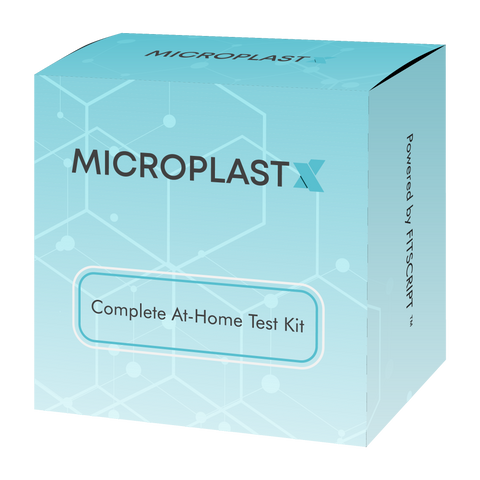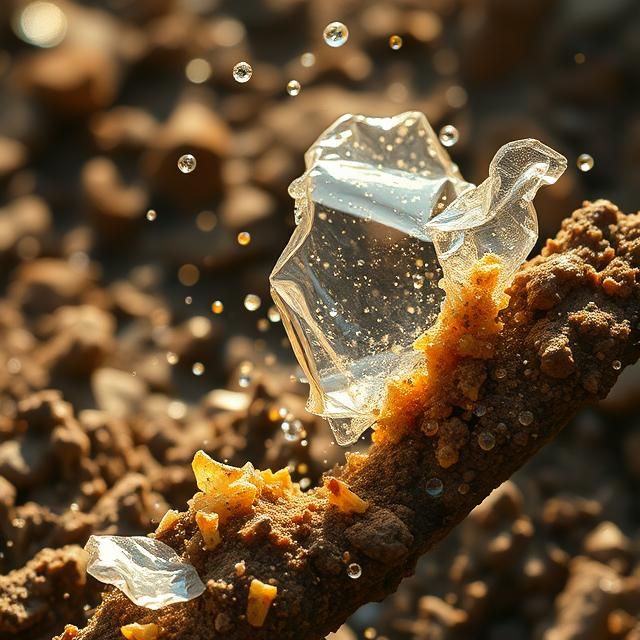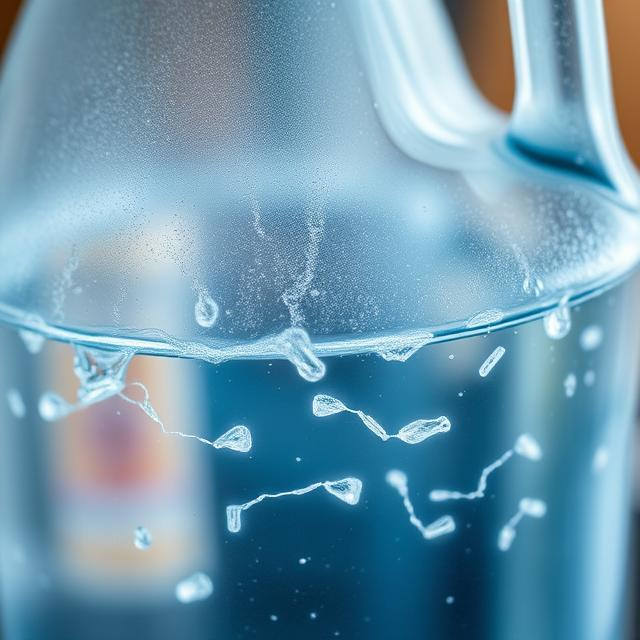Does Reverse Osmosis Remove Micro Plastics and Is It the Best Way to Filter Water?
It’s a fundamental question for anyone concerned about their drinking water: can microplastics pass through basic water filters? The short answer for most common household filters is, unfortunately, yes, they often can. When you're trying to figure out if does reverse osmosis remove micro plastics, it's important to first understand the limitations of less advanced systems and why we need more robust microplastic removal by RO.
Many common filters, like those found in pitcher filters, refrigerator dispensers, or even standard faucet attachments, are primarily designed to improve water taste and odor by removing chlorine, sediment, and some larger particles. However, microplastics are incredibly diverse in size and shape, with many being microscopic – far too small for the average filter's pores to consistently catch. These basic microplastic water filtration methods typically have pore sizes that allow the tiniest plastic particles to slip right through, meaning your filtered water might still contain these unwelcome guests. If you are serious about trying to filter microplastics with reverse osmosis, understanding this baseline limitation is crucial. It highlights why a more advanced approach, like considering if does reverse osmosis remove micro plastics effectively, becomes necessary for comprehensive protection against these widespread contaminants in our water supply. For a deeper understanding of what's in your body, consider our MicroplastX Microplastics Blood Test Kit.
How Does Reverse Osmosis Work to Remove Microplastics?
So, if basic filters aren't enough, how does reverse osmosis work to remove microplastics? This is where reverse osmosis (RO) systems truly stand out among other microplastic water filtration methods. The way RO operates makes it incredibly effective for microplastic removal by RO, providing a high level of confidence that you can filter microplastics with reverse osmosis.
An RO system works by forcing water through a semi-permeable membrane under pressure. Imagine this membrane as an incredibly fine sieve, far more intricate than any standard filter. The pores in an RO membrane are typically around 0.0001 microns in size. To put that into perspective, most microplastics range from 1 micron down to nanometer sizes, but even the smallest microplastics and many nanoplastics are larger than the pores of an RO membrane. This is the core reason why does reverse osmosis remove micro plastics so well.
Here's a simplified breakdown of the RO process for microplastic removal:
-
Pre-filtration: Before hitting the RO membrane, water usually passes through pre-filters (like sediment and carbon filters). These remove larger particles and chlorine, protecting the delicate RO membrane.
-
The RO Membrane: This is the core of the system. Under pressure, water molecules are pushed through the incredibly tiny pores of the membrane. Almost all dissolved solids, chemicals, heavy metals, bacteria, viruses, and, importantly, microplastics are too large to pass through these pores. This is the key to how effectively does reverse osmosis remove micro plastics.
-
Wastewater Rejection: The contaminants that are blocked by the membrane are then flushed away as wastewater, preventing them from building up on the membrane's surface.
-
Clean Water Collection: The purified water, now largely free of contaminants including microplastics, is collected in a storage tank, ready for use.
This multi-stage process, particularly the extremely fine RO membrane, is why does reverse osmosis remove micro plastics with such high efficiency. It's a leading solution for microplastic removal by RO, allowing you to effectively filter microplastics with reverse osmosis and ensure cleaner drinking water. You can learn more about how to assess environmental samples by understanding how to test for microplastics.
What Are the Pros and Cons of RO Systems for Plastic Filtration?
When considering whether does reverse osmosis remove micro plastics effectively, it’s important to weigh the pros and cons of these systems specifically for microplastic removal by RO. While highly effective, like any filtration method, there are trade-offs to consider when you decide to filter microplastics with reverse osmosis.
Pros of RO Systems for Plastic Filtration:
-
Superior Microplastic Removal: This is the biggest advantage. RO membranes have such tiny pores that they are exceptionally good at blocking virtually all microplastics, even down to nanoscale particles. This makes them one of the most reliable microplastic water filtration methods available, specifically designed to filter microplastics with reverse osmosis.
-
Broad Contaminant Removal: Beyond plastics, RO systems also effectively remove a wide range of other pollutants, including heavy metals (lead, mercury), dissolved solids (TDS), fluoride, chlorine, bacteria, viruses, and many chemicals. This offers comprehensive water purification.
-
Improved Taste and Odor: By removing so many impurities, RO water often tastes cleaner and purer than water filtered by other methods.
-
Convenience: Once installed, RO systems provide on-demand purified water right from your tap.
Cons of RO Systems for Plastic Filtration:
-
Water Waste: RO systems typically produce a significant amount of wastewater (brine) for every gallon of purified water. This can be a concern in drought-prone areas or for environmentally conscious users.
-
Slower Filtration Rate: The process of forcing water through such a fine membrane can be slow, requiring a storage tank for purified water.
-
Removes Beneficial Minerals: RO removes almost everything from water, including beneficial minerals like calcium and magnesium. Some users choose to add a remineralization filter post-RO. This does not impact how does reverse osmosis remove micro plastics, but rather the mineral content.
-
Cost and Maintenance: RO systems are generally more expensive to install than basic filters and require regular filter and membrane replacements, adding to ongoing costs.
Despite some drawbacks, for those primarily concerned with does reverse osmosis remove micro plastics, the effectiveness of microplastic removal by RO often outweighs the cons, making it a leading choice to filter microplastics with reverse osmosis. To gauge your own exposure to these tiny particles, even with filtered water, consider our MicroplastX Microplastics Blood Test Kit.
Is Reverse Osmosis Enough or Should You Add Other Filters?
You've learned that does reverse osmosis remove micro plastics quite effectively, and that microplastic removal by RO is excellent. So, the next logical question is: is reverse osmosis enough, or should you add other filters to your system? While RO is a powerful standalone solution for ways to filter microplastics with reverse osmosis, some people choose to add additional stages for various reasons.
For the specific purpose of plastic filtration, an RO system on its own is highly capable. Its membrane's pore size is small enough to capture even the tiniest microplastics and many nanoplastics. However, a complete RO system typically already includes other filters as part of its multi-stage process:
-
Sediment Pre-filter: This filter captures larger particles like dirt, rust, and sand, protecting the delicate RO membrane from clogging.
-
Carbon Pre-filter (or two): These filters remove chlorine, chloramines, and other organic chemicals that could damage the RO membrane or cause taste and odor issues.
These pre-filters are crucial for the longevity and efficiency of the RO membrane and contribute to the overall microplastic water filtration methods.
Beyond these standard pre-filters, some people choose to add a post-filter:
-
Remineralization Filter: Because RO removes beneficial minerals, a remineralization filter can add a balanced amount of healthy minerals back into the water, improving taste and providing health benefits. This does not affect how does reverse osmosis remove micro plastics, but rather enhances the final water quality.
In most cases, if your primary concern is microplastic removal by RO, a standard multi-stage RO system is more than sufficient. The additional filters in an RO unit work to protect the RO membrane and enhance the water's taste, rather than directly adding more microplastic removal capabilities beyond what the RO membrane already achieves. Therefore, to filter microplastics with reverse osmosis, the integrated system is generally robust enough. For a comprehensive understanding of what's truly in your body, consider ordering our MicroplastX Microplastics Blood Test Kit.
How Can You Tell If Your Filter Is Actually Catching Plastic?
After investing in systems that does reverse osmosis remove micro plastics, you might logically ask: how can you tell if your filter is actually catching plastic? Since microplastics are often invisible to the naked eye, confirming the effectiveness of your microplastic removal by RO or other microplastic water filtration methods can be challenging.
Unfortunately, for the average homeowner, there isn't a simple, immediate visual test to confirm plastic removal. You won't see a pile of microplastics in your filter cartridge like you might see sediment. The particles are too small to visually confirm your ways to filter microplastics with reverse osmosis are working.
The most reliable ways to assess if your filter is performing as expected for plastic contaminants involve:
-
Manufacturer Specifications: Check the product's documentation. Reputable manufacturers will clearly state what their filter is certified to remove, often including a micron rating. For RO systems, the very nature of their membrane's pore size (0.0001 microns) is the primary indicator that it can effectively filter microplastics with reverse osmosis.
-
Third-Party Certifications: Look for certifications from organizations like NSF International (e.g., NSF/ANSI Standard 58 for RO systems) which verify the contaminant reduction claims. While these don't always specifically list microplastics as a tested contaminant, the removal of particles of a certain size implies microplastic removal.
-
Professional Water Testing: The most definitive way is to send samples of your tap water (before and after filtration) to a specialized laboratory for microplastic analysis. These labs use advanced microscopy and spectroscopy techniques to identify and quantify plastic particles, providing concrete evidence of your system's performance in how to remove micro plastics from water. This is truly how you can tell if your microplastic water filtration methods are working. To understand more about the methods used for such tests, learning how to test for microplastics can be insightful.
Without laboratory testing, you're relying on the system's design and certifications. However, the high efficiency of microplastic removal by RO systems provides strong assurance.
Is It Worth Testing Your Body for Microplastic Exposure Despite Using RO?
You've done your research, you've invested in a system that does reverse osmosis remove micro plastics, and you're confident in your microplastic removal by RO. So, is it worth testing your body for microplastic exposure despite using RO? The answer is a resounding yes, and here’s why understanding your personal exposure is so important.
While RO is highly effective at purifying your drinking water, water is only one source of microplastic exposure. Consider these other common pathways:
-
The Air You Breathe: Microplastics are airborne, shedding from synthetic clothing, carpets, furniture, and tires. You inhale these particles daily, indoors and out.
-
The Food You Eat: Plastic particles can get into food during processing, from packaging, or even from contaminated seafood.
-
Other Consumer Products: Personal care products, cleaning supplies, and countless other items in your home can contribute to your overall microplastic burden.
Even if you filter microplastics with reverse osmosis for your water, these other sources mean you're still accumulating plastic particles. A blood test provides a unique, comprehensive snapshot of your body's total microplastic load, regardless of the source. It tells your personal story of exposure.
MicroplastX understands this holistic picture. Our MicroplastX Microplastics Blood Test Kit offers a direct, convenient, and insightful way to assess the levels of various plastic particles present in your bloodstream. It’s a powerful tool to understand your current plastic burden and gauge the effectiveness of all your efforts to reduce exposure, not just your water filtration. This allows you to truly see if your efforts to filter microplastics with reverse osmosis and other strategies are making a difference.




